Simply Smashing
Why Chrysler destroyed 46 priceless Turbine Cars.
By Steve Lehto Video grabs by Mark E. Olson/turbinecar.com Photos: TheBruntBros
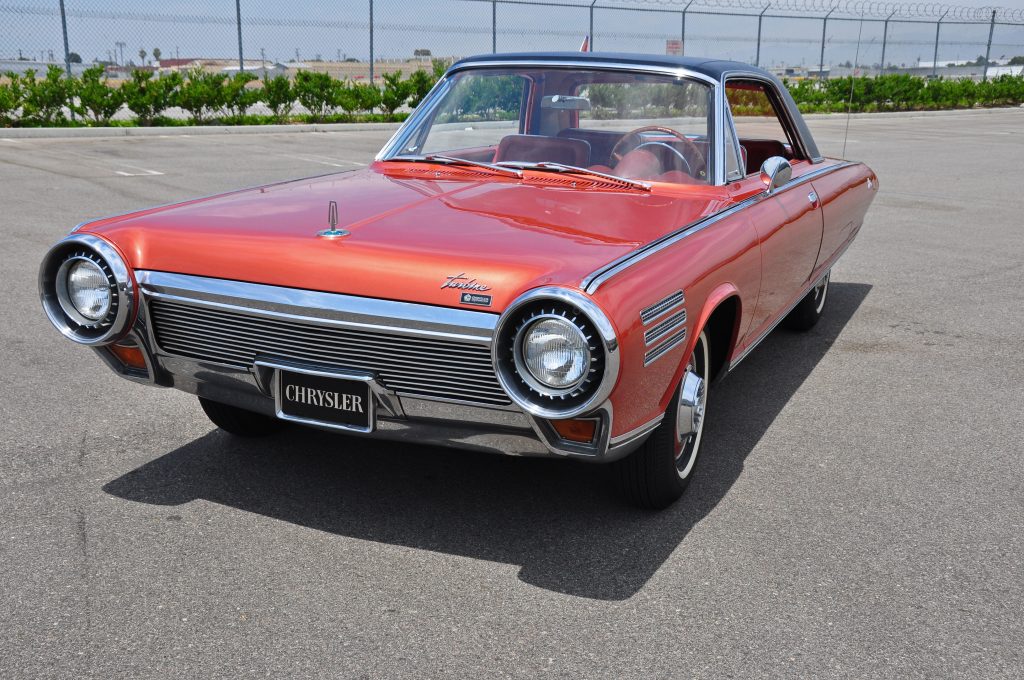
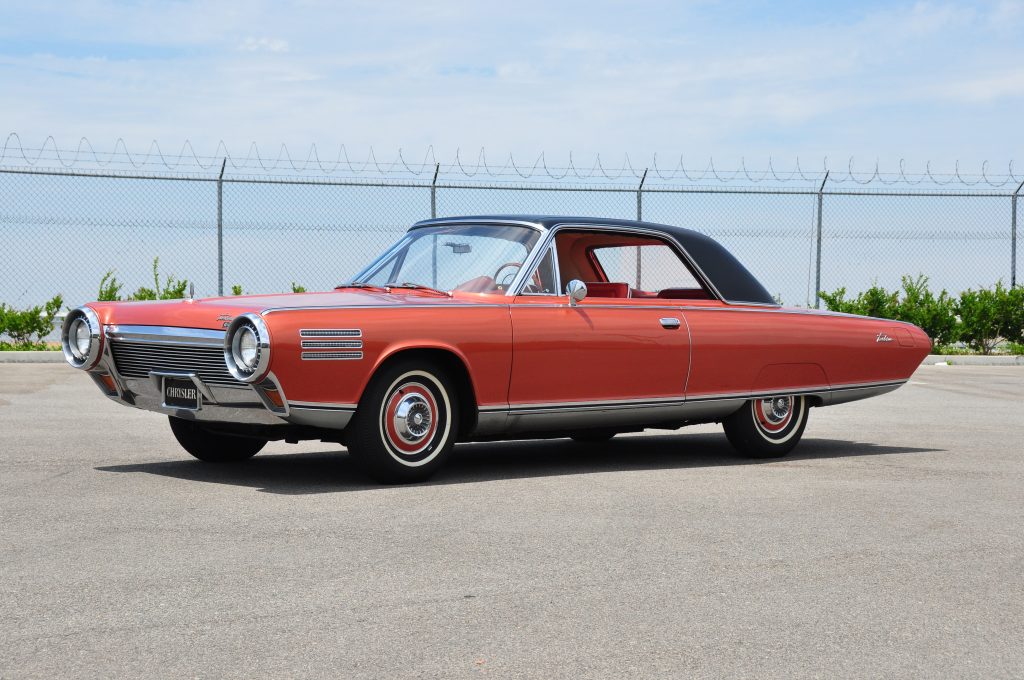
One of the very few remaining—and running—Chrysler Turbine Cars, this one owned and operated by Jay Leno.
In the 1960s, Chrysler built a fleet of Turbine Cars which were remarkable for a variety of reasons, not the least of which is that most of them were intentionally mutilated and burned in a scrapyard not far from Detroit just a few years after they had arrived on the scene. This episode, their destruction, has spawned as many urban legends and myths as any other aspect of the program, a program which already had its fair share of stories in need of a good debunking. It is often said that the cars were destroyed “because of oppressive import duties,” or that some form of government conspiracy played a part. These notions are not correct. But the destruction of the cars does involve Federal import laws so the confusion is understandable. Here is the real explanation of why the cars were destroyed. Read this carefully so that you can debunk the story next time you hear it.
Chrysler began developing turbine-powered automobiles in 1953 and by 1963 had one they considered dependable enough to put in the hands of a consumer. They decided to build a fleet of these cars and lend them to average Americans, as part of a grand consumer test. The cars were hand built in Italy by Ghia; they were crated and shipped to the Motor City without drivetrains. Engines and transmissions – modified TorqueFlites – were installed in Detroit. This point is important and will be discussed later. The portion of the car created by Ghia, according to sources within Chrysler who were in Italy overseeing its creation, cost around $20,000 or $25,000 per car. A good amount of money in 1963 dollars but nothing crazy, considering how cool the cars were. Presumably, Chrysler got a good price on the cars because they were ordering 55 – a bulk discount of sorts – and because Chrysler was a good customer to Ghia.
When the cars were brought to America, they passed through customs. At the port of entry, an importer is given two choices. The most obvious but most expensive course of action is to pay full import duties. This allows the importer to do whatever they wish with the product once it has crossed the border into the country. Use it, sell it, export it, it doesn’t matter. US Customs simply takes their money and waves the goods through.
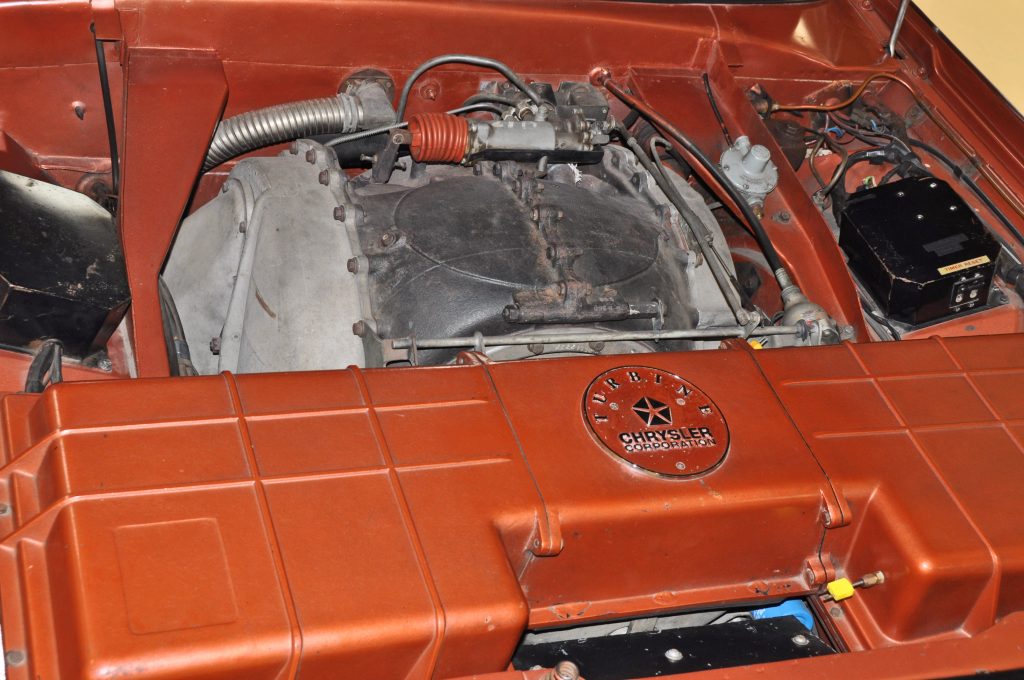
Turbine engines were removed before the cars were destroyed.
But what about the situations where a person might want to bring something into the country temporarily? For example, suppose you were a European racecar driver and wanted to bring your car into the country for a race and then ship it back out of the country after the race? A full import duty wouldn’t be fair. So, the government allows for Temporary Importation Under Bond. If the importer promises that the item will not remain in the country beyond a specified time, they can post a bond and not pay the full import duty. At the time the “temporary” time frame passes, the item must no longer be within US borders. This means one of two things. The goods could be exported out of the country before the deadline. Or, the goods can be destroyed – with proof of destruction – and the importer is treated as if the item had been exported out of the country. It seems odd, and something only the government would think up, but that’s how it works. This is all explained on the helpful Customs and Border Protection website, www.cbp.gov.
So, here is what happened with Chrysler’s Turbine Cars. Chrysler had 55 Ghia-built Turbine Cars which were going to be coming into the country over a period of time; the cars were being hand assembled, more or less, so they would not all be arriving at once. Chrysler could have paid the full duty on the 55 cars and then just done whatever it pleased with them. Instead, Chrysler chose to post the bond and “termporarily import” the vehicles. While the standard time period for this was one year, it could be extended twice, for a total “temporary” import time of three years.
Why did Chrysler make this choice? For one thing, it was cheaper. A temporary import bond ends up costing less than a full import duty. Multiply that times 55 and the savings were substantial. And, Chrysler knew from the beginning that most of these cars were destined to be destroyed. Chrysler – along with the other car manufacturers – often destroyed its prototypes and test cars. If the cars were going to be destroyed, why pay the full import duty, especially when the destruction of the cars was an acceptable way to recover the temporary import bond?
And so it was. Three years after the cars were temporarily imported to the US, Chrysler was faced with several choices. It could ship the cars out of the country or destroy the cars. In either case Chrysler would recover its bond and only pay a small fee per car. If Chrysler had changed its mind, it could keep the cars in the country and pay a penalty which was DOUBLE the import duty. Multiply that across 55 cars and it would get costly. Chrysler chose to withhold nine of the cars and destroyed the other 46. Presumably, it got its bond back on the 46 it destroyed but was penalized for the nine which overstayed their limit.
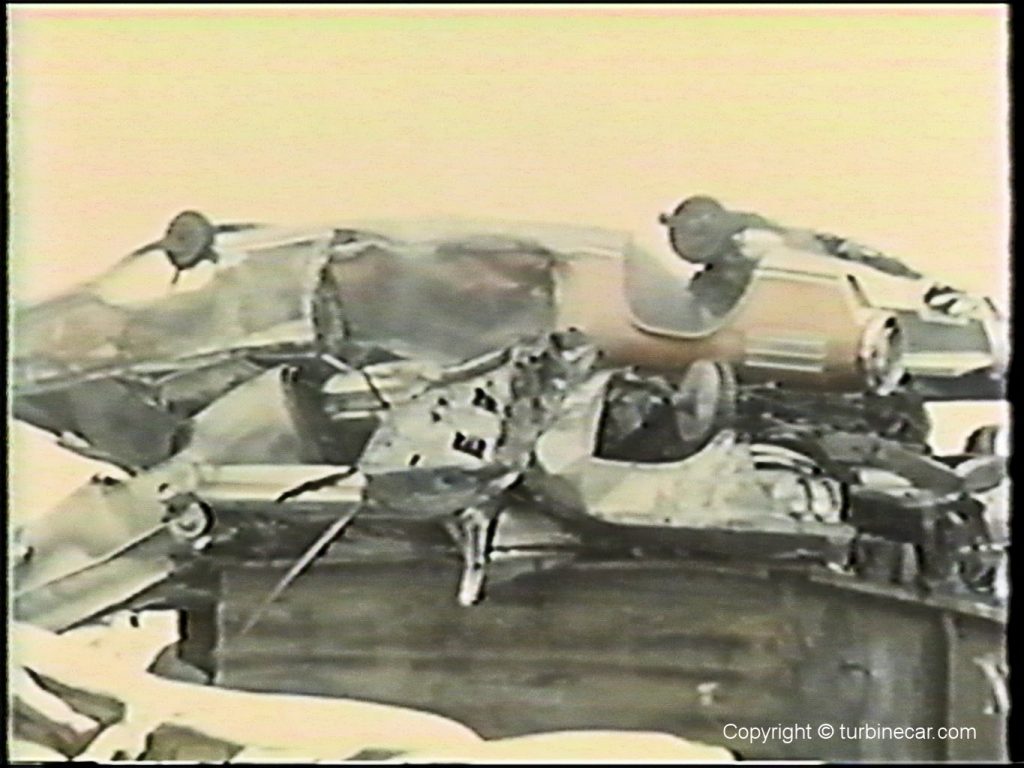
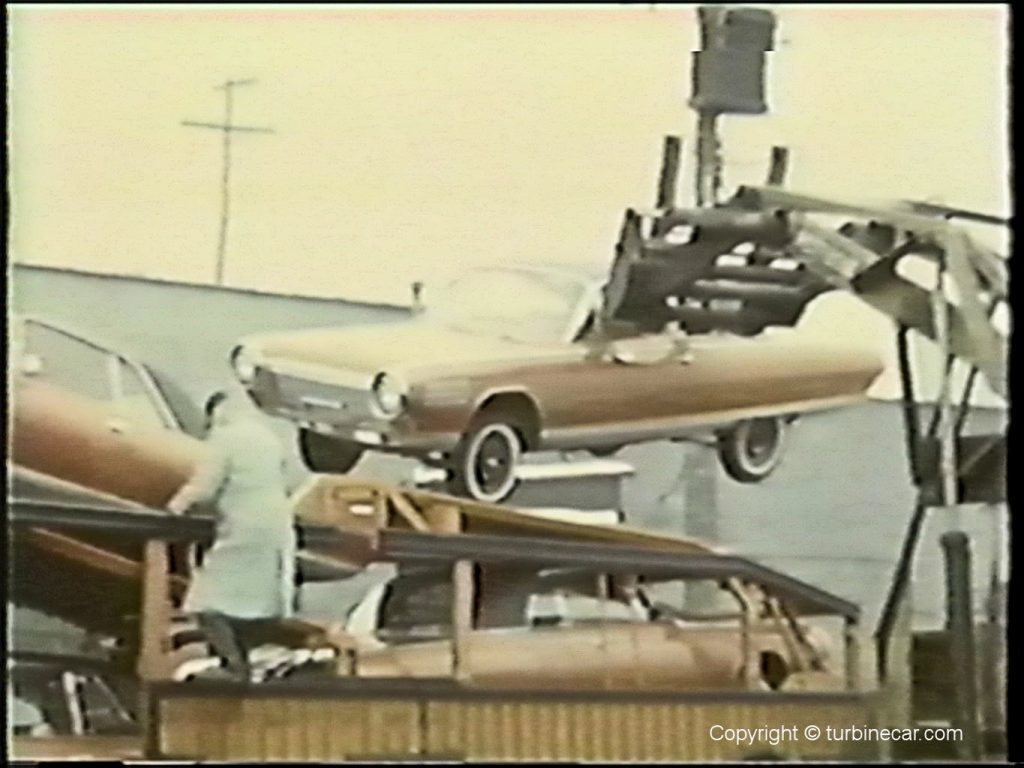
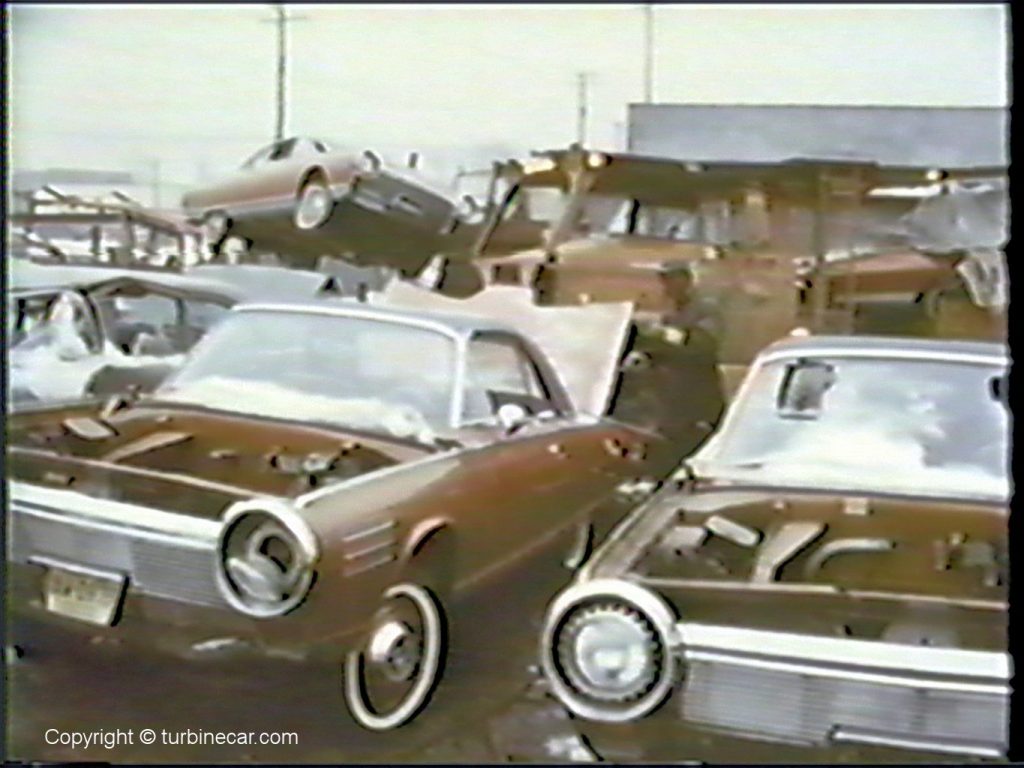
Screen grabs of the Turbine Car destruction video posted on YouTube.
Interestingly, not the entire car had to be destroyed. The turbine engines and transmissions were assembled and installed here, in a plant on Greenfield Road in Detroit. It was only the portion of the car built in Italy by Ghia which had to be destroyed. As noted above, those partially-complete cars were not terribly expensive in the grand scheme of things. It was the engine which was the truly expensive component. Another one of the urban legends which is often heard about this is that it was the cost of developing the engines which made the import duties so exorbitant. Of course, since the engines were not imported, we know this isn’t true.
Photos taken at the time the cars were destroyed show that many of the cars were, indeed, missing their engines. Bill Carry, the man in charge of maintaining the fleet of cars while they were lent to consumers, confirmed that most of the cars were turbine-less at the wrecking yard. After this program ended, Chrysler gave a few of the cars to museums, kept three for itself, and even sent extra engines to those museums. Chrysler still had a few spares lying around its archives up until a few years ago. As noted previously, the import duties and temporary import bonds had no connection to the turbine engines.
So, the upshot is this: What doomed the turbine cars – consigning them to the wrecking yard before they had driven a single mile in the US – was a decision made by Chrysler before the first Turbine Car had even entered the US. Chrysler chose to bring the cars into the country under the temporary import bond. It wasn’t oppressive import duties and it wasn’t cloak-and-dagger on the part of dark government forces, lobbying for the cars to be destroyed.
This story has confounded Mopar fans for years and Chrysler has done little to clarify it. This could be because it distracts from the portion of the story that really upsets people. Chrysler chose to destroy 46 priceless Turbine Cars! Just remember, though: Chrysler made the decision on its own, long before the Turbine Cars were driving on US soil.
If you have the stomach for it, you can see a short YouTube video of the carnage at http://tinyurl.com/n37vq8m. Don’t say we didn’t warn you.

